WORKS
Nouvelles Antiquités (2021-2022)
My university training as an archaeologist – grounded both in theory and practice – often leads me to “see” ancient forms and colours within the contemporary world, also among the food products available in a normal supermarket. Having viewed ancient finds of all kinds, precious and not, for many years of study and archaeological excavations, directly or through images reproduced in encyclopaedias, repositories of ancient art, essays and excavation reports, enables me to easily, sometimes automatically, trace the outlines of antiquities in foods and objects that have no typological correspondence to ancient material. It should also be noted that, at least in most cases, these elements did not have a place in the daily lives of the ancients – for example, pineapples and cultivated mushrooms did not appear even on the tables of the most lavish Roman banquets.
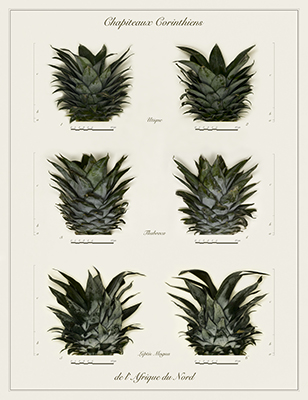
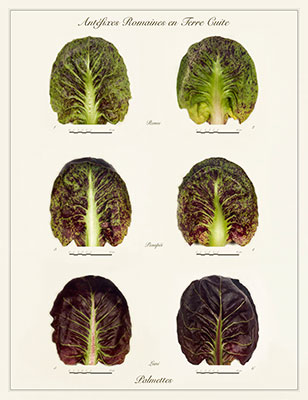
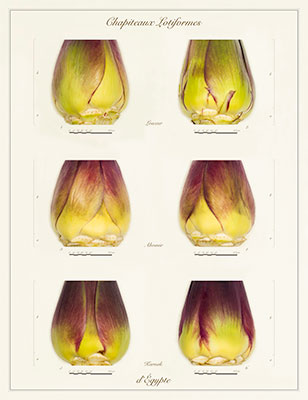
Corinthian capitals | Palm antefixes | Lotus capitals
After having identified these analogies between the ancient world and contemporary Western society – between mushrooms, pineapple tufts, artichokes and capitals; between celery stalks, leeks and columns; between cured meats, cheeses, fish, ice cream and ancient marble; between candies and precious stones, between cake decorations and amulets –, in order to reveal and reinforce them, I reproduced the new antiquities photographically and then composed the photographs into panels that explicitly refer to those of the 19th century, also depicting antiquities, which contain drawings masterfully made and therefore of great aesthetic value. Or to the more recent ones containing photographs and catalogues of stones variously used in ancient times.
Bringing the elements of our everyday life – purchased in supermarkets but also in local markets and economical e-commerce sites or borrowed and returned – into illustrious, refined contexts that often require in-depth knowledge, is for me a way to affirm the importance, value and dignity of all lives and all individuals, believing ultimately – firmly – only in equality. Conversely, using elements of everyday life to remake the combinations and compositional modules of universally recognised traditions and knowledge does not mean lowering their intellectual level, but hoping for an increasingly widespread dissemination, with the conviction that sharing knowledge is an indispensable premise for a more just and aware society.
Project of 25 photographs; inkjet print on 100% cotton paper
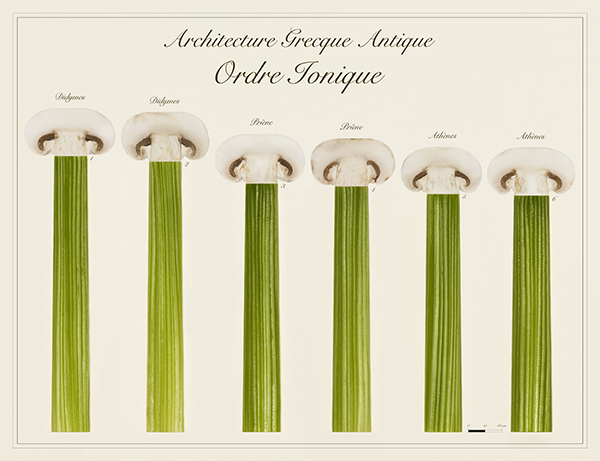
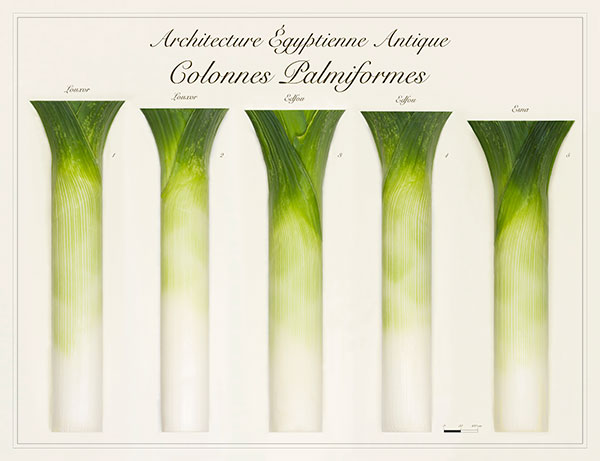
Ancient Greek architecture: Ionic order | Ancient Egyptian architecture: columns with palm capitals
/ Ita
Nouvelles Antiquités (2021-2022)
La mia formazione universitaria di archeologa – teorica e pratica – mi induce spesso a “vedere” le forme e i colori antichi all’interno del mondo contemporaneo, anche tra i prodotti alimentari in vendita in un comune supermercato. L’avere visionato reperti antichi di tutti i tipi, preziosi e non, per tanti anni di studio e di scavi archeologici, direttamente o attraverso le immagini riprodotte in enciclopedie, repertori di arte antica, saggi e rapporti di scavo, mi permette facilmente, talvolta in modo automatico, di rintracciare i contorni delle antichità in cibi e in oggetti che non solo non corrispondono tipologicamente al materiale antico, ma nemmeno, almeno nella maggioranza dei casi, trovavano posto nella vita quotidiana degli antichi – neppure sulle tavole dei banchetti romani più ricchi, ad esempio, comparivano ananas o funghi coltivati.
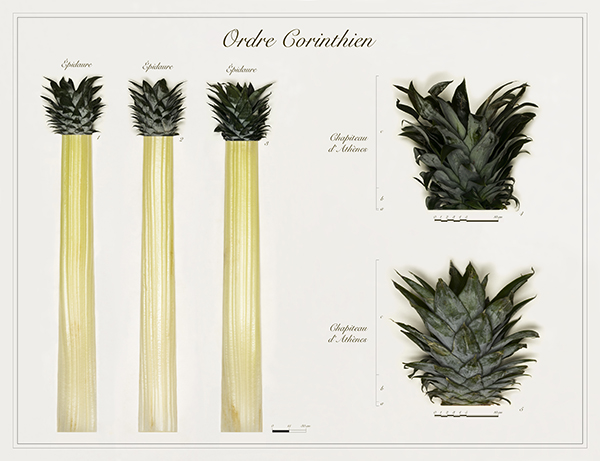
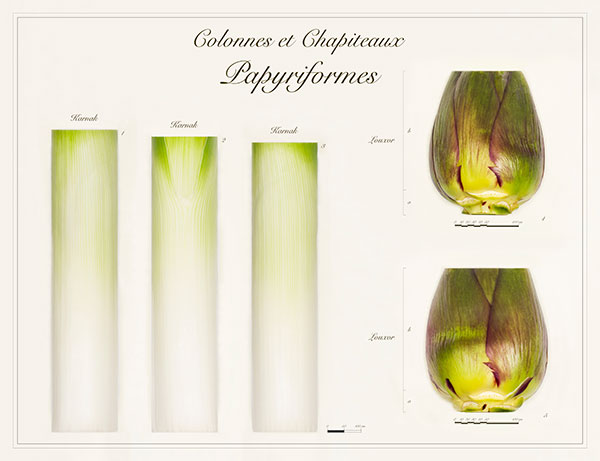
Ancient Greek architecture: Corinthian order | Ancient Egyptian architecture: columns and papyrus capitals
Dopo aver rintracciato queste analogie tra mondo antico e società occidentale contemporanea – tra funghi, ciuffi d’ananas, carciofi e capitelli; tra gambe di sedano, porri e colonne; tra salumi, formaggi, pesce, gelato e marmi antichi; tra caramelle e pietre preziose, tra decorazioni per torte e amuleti – per renderle manifeste e rafforzarle ho riprodotto fotograficamente le nuove antichità per poi comporre le fotografie in tavole che si rifanno esplicitamente a quelle ottocentesche, sempre di antichità, contenenti disegni magistralmente realizzati e dunque di grande pregio estetico, o a quelle più recenti contenenti fotografie e schedature di pietre variamente utilizzate in antico.
Portare gli elementi del nostro quotidiano – acquistati in supermercati ma anche in mercati rionali e siti di e-commerce a buon mercato o presi a prestito e restituiti – in contesti illustri e raffinati che spesso presuppongono conoscenze di alto livello, è per me un modo per affermare l’importanza, il valore e la dignità di tutte le vite e di tutti gli individui, credendo in ultima istanza – fermamente – nella sola uguaglianza. Viceversa, rifare con elementi della vita di tutti i giorni combinazioni e moduli compositivi propri di tradizioni e saperi universalmente riconosciuti non significa abbassare il livello intellettuale di questi ultimi, ma auspicarne una diffusione sempre più capillare, nella convinzione che la condivisione delle conoscenze sia indispensabile premessa di una società più giusta e consapevole.
Progetto di 25 fotografie; stampa inkjet su carta 100% cotone
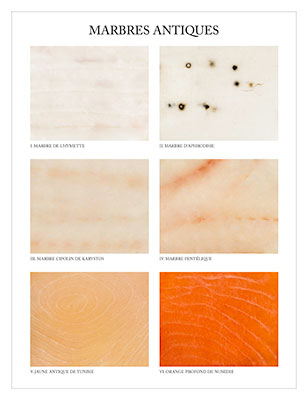
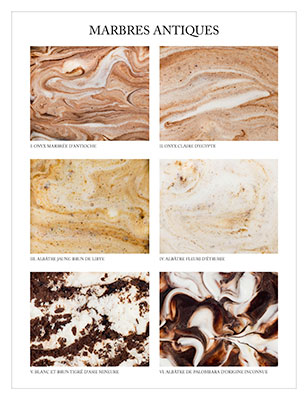
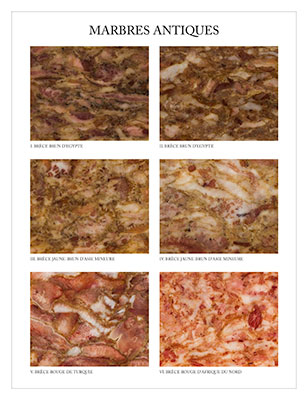
Ancient marble